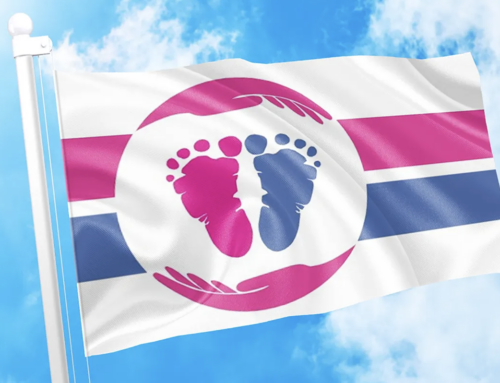“There aren’t enough of us to do what needs to be done…”
“We have no money…”
“The media isn’t fair to us…”
‘We need to renew the movement…”
Long-time workers in the pro-life movement will be forgiven for assuming that these complaints were made at a recent pro-life gathering. In fact, the above statements were made by delegates to the National Action Committee on the Status of Women (NAC) annual general meeting and conference held in Ottawa in early June. It would appear that all of the problems – tactical, strategic and financial – that face the pro-life/pro-family movements are also common to the pro-feminist/pro-abortion movements.
The first workshop this writer planned to attend was listed as “How to meet your MP…Prepares women for the most effective lobbying of their local MP by explaining the role of MPs and how government functions.” The resource person was a professional “government relations consultant” (lobbyist). This workshop had to be cancelled: not one NAC delegate was interested enough to attend.
There was standing room only however, for the session entitled “How to deal with the right,” led by Carol-Jean Smith from the Women’s Progressive Farm Movement and the Centre for Democratic Renewal in the U.S., and retiring NAC president Chaviva Hosek. After outlining how the American pro-life movement is now making all the correct moves, Carol-Jean went on to define the “new right” (pro-family, pro-life, pro-curch) and the “far right” (neo-Nazi, white supremist, etc.).
In the discussion period, it was apparent that NAC members are frightened – to the point of paranoia – of the REAL Women of Canada organization. Originally dismissed by the radical feminists as “ignorant and uninformed,” REAL Women are now perceived as “very dangerous” right-wing visionaries who can repeatedly “tell lies” and get away with it. MPs and the media are seen as falling all over themselves in their attempts to vindicate REAL Women and their “stereotype of respectability.”
NAC’s solution to this perceived threat form the right is to take their strategies and make them their own. Feminists must stress “family” and be seen as concerned about its destruction. REAL Women is seen to have a “vision” and the feminists must build an alternative vision. Part of this alternative vision is to become even higher-profile on the abortion issue, stressing a right to abortion, since this is an issue on which the right has seized the “moral high ground,” defending fetal rights rather than women’s rights.
The workshops on “Reproductive Control” and “Reproductive Technologies” focused on the evils of Depo-Provera, coercive family planning practices, forced sterilization of the handicapped and minorities (such as Native Canadians) and unscrupulous male-dominated pharmaceutical companies and researchers. Birth control methods and technologies, are said to be “shamefully inadequate’ because too many have inherent health risks and none are totally effective. As well, doctors prefer to push pills rather than informing patients of all methods and their risks, thereby allowing the patient to make an informed, albeit limited choice.
New reproductive technologies were described as “everyone’s worst nightmares come true.” Participants in this workshop were told that women should be concerned about IVF technologies, genetic manipulation, dangerous contraceptive drugs and cloning. In the area of parthenogenesis and cloning, it was pointed out that, as usual, men hold the dominant position: having both X and Y chromosomes, they could conceivably (pardon the pun) produce a male or a female offspring, whereas females can only beget females.
An interesting contradiction in feminist thinking was raised in the workshop on “Reproductive Control” by a physically disabled “pro-choice” woman, who objected to abortion for fetal handicap. She insisted that abortion rights were women’s rights and said that she objects to the pro-abortion movement and Morgentaler promoting abortion of handicapped children. There was general agreement that this position was not wise, prompted perhaps more by an instinct for good public relations than anything else, since it was pointed out that the “anti-choice” movement has public support in this area.
Workshop leader, Dr. Jane Gordon, asked, “Where do we draw the line if we accept abortion for eugenic reasons?” This rhetorical question was not answered. Objections were raised to a policy of only providing amniocentesis testing if the woman involved agreed beforehand to an abortion if the child was shown to have “defects.” It seems that the feminist demand for abortion rests solely on the belief that only women’s rights are at stake, the rights of a child to be born are non-existent for these women.
The workshop entitled “To defeat Canada’s abortion law and give all women equal access to abortion” was termed a “strategy” workshop and Nikki Colodny, the new abortionist at Morgentaler’s Toronto Clinic, was the guest of honour. It is obvious that Ms. Colodny has become the heroine of the feminist pro-abortion movement – heartily welcomed since they had been very uncomfortable at having to promote Henry Morgentaler.
The discussion centered plans for a large demonstration in Ottawa in the spring of 1987. However, the key element is “labour support, labour money and labour resources” – if they can’t get these they will call off the march. One of their fears is that they will not manage to put enough people on Parliament Hill. As one CARAL representative from Halifax stated, “for every one of us, there are 3,000 on the other side…I like to sit back and say I represent X thousand people and, unless someone asks me to produce them, I don’t.” In other words, she can’t.
Union support is vital for a successful march because, in addition to boosting the numbers in attendance, labour can supply the money to get the bodies to Ottawa. Lack of funds to support the pro-abortion movement, both locally and nationally was frequently bemoaned.
Another problem is that the media is perceived as no longer co-operating with the pro-abortion movement. REAL Women is said to have media attention at the moment and many complaints were made about the lack of coverage of the “abortion tribunals” recently held across the country. These were summed up as “too much work” and “not worth it.”
Political lobbying is also high on the agenda – organizing riding-by-riding visits to MPs as well as lobbying in Ottawa. Norma Scarborough (president of the Canadian Abortion Rights Action League) favours this over the proposed march (which explains why CARAL recently hired a professional lobbying firm to work on Parliament Hill). A national letter-writing campaign to MPs is now well under way. Again, this kind of pressure is easier to organize than getting out large numbers for a public demonstration.
The second Toronto abortion clinic was hailed as a major step that has received tremendous support (union and NDP support at the clinic’s opening press conference were seen as significant advances). We were told that “…politicians aren’t always pressured by reasons and right arguments…they are pressured by fear.” This was the stated reason why Attorney General Ian Scott “keeps the (Morgentaler) clinic open.” To these women, the abortion battle has been won in Ontario.
Feminist strategists recognize that a campaign based solely on abortion-on-demand will not win many supporters. Putting abortion into a board reproductive rights policy, which includes abortion in a general demand for “improved” methods of contraception and a right to sterilization, will bring more women to their side. The proposed “March for choice” would, it was stressed, be more successful if this wider policy was adopted. This pragmatic consideration resulted in the resolution relating to abortion, presented later at the annual general meeting, being amended to include a reference to birth control.
The resolution on abortion was proposed by the Ontario Coalition for Abortion Clinics. The resolution unanimously passed, calls on NAC to take a highly-public profile in the abortion rights struggle and to actively participate in the newly-formed “Pan-Canadian choice movement.”
The original motion, which defined the “Pan-Canadian” movement as “Quebec and English Canada,” was amended during discussion on the motion as referring to “Quebec and Canada.” The “English” part was quickly dropped, in recognition that there are Francophones outside of Quebec. Some women argued that Quebec is part of Canada and that this definition was unnecessary. Nevertheless, it was carried after a young woman from Quebec stated, in no uncertain terms, that “Quebec wants it that way.” Since much was made of a new Coalition for Free Abortion (120 groups are said to belong) in Quebec, the English-speaking delegates were perhaps cowed by the seeming strength of the movement in French-speaking Canada.
The weekend conference also addressed the issues of trade, privatization and deregulation (against), tobacco marketing (against) lesbian rights (for), militarization of the economy (against), the 1986 federal budget (against), and many other issues.
Newly-elected NAC president, Louise Dulude, recently made crystal clear the conditions for women’s groups wishing to join NAC. Speaking to the Manitoba Organization of Nurses Association, Ms. Dulude said, “You don’t have to be in favour of abortion to join NAC or MAC (the provincial equivalent). All we ask is that you be in favour of choice. If your group is anti-choice, we do not want you as members.” The Manitoba Nurses voted against joining NAC, because of this insistence on a pro-abortion view.



